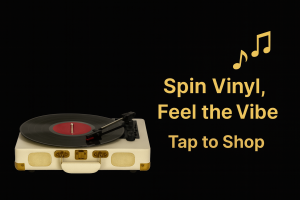Among the many timeless creations by classic rock artists, The Beatles’ “Hey Jude” stands as a monumental anthem of hope, resilience, and transformation.
- Writers: Paul McCartney (credited to Lennon–McCartney)
- Album: Released as a single (1968), later included on The Beatles’ compilation albums.
- Producer: George Martin
This masterpiece is more than just a song, it’s a cultural touchstone that has influenced generations of music lovers and artists alike.
From its heartfelt origin story to its unforgettable singalong coda, “Hey Jude” captures the essence of what makes classic rock an enduring genre: emotional depth, universal themes, and groundbreaking artistry.
Let’s dive into the history, meaning, and legacy of this iconic track.
📝 Background & Meaning:
“Hey Jude” was written primarily by Paul McCartney as a comforting message for John Lennon’s son, Julian, during his parents’ separation.
Originally titled “Hey Jules,” Paul wrote the song to console Julian Lennon after John left his wife, Cynthia, for Yoko Ono.
McCartney later changed “Jules” to “Jude” because he felt it sounded better musically.
The song starts as an intimate ballad, offering reassurance and hope, and gradually builds into an anthemic singalong with an extended, unforgettable “na-na-na-na” coda.
At its core, “Hey Jude” is about hope, encouragement, and facing difficult changes with strength and optimism.
🎤 Key Themes:
- Empathy: Paul’s message to Julian (and, by extension, anyone facing hardship) is one of compassion and support.
- Transformation: The song suggests that inner strength can help overcome sadness.
- Unity: The communal singalong ending symbolizes collective healing and togetherness.
🎧 Notable Lyrics:
“Hey Jude, don’t make it bad / Take a sad song and make it better.”
These opening lines encapsulate the song’s central theme of turning pain into positivity.
🌍 Cultural Impact:
- At over 7 minutes, it was one of the longest singles ever released at the time, yet it topped charts worldwide.
- It became a universal anthem of hope and resilience, often performed at large gatherings and events.
- The song remains one of The Beatles’ most beloved and enduring tracks, often cited as one of the greatest songs of all time.
“Hey Jude” isn’t just a song; it’s a timeless message of comfort and resilience that transcends generations. 🎶
🎸 Legacy Among Classic Rock Artists:
“Hey Jude” solidified The Beatles’ reputation as pioneers of classic rock, influencing countless artists who followed.
Its innovative structure and emotional depth set a benchmark for what a rock song could achieve.
Many classic rock legends, such as Elton John and Billy Joel, have cited The Beatles as major influences, with “Hey Jude” often singled out for its universal appeal.
🎹 Live Performances & Covers:
“Hey Jude” became a staple in The Beatles’ live performances and later in Paul McCartney’s solo tours.
The song has been covered by numerous artists across genres, including Wilson Pickett and Elvis Presley, showcasing its versatility and enduring popularity among classic rock fans.
📀 Achievements & Records:
- Spent nine weeks at No. 1 on the Billboard Hot 100, the longest run of any Beatles song.
- Certified platinum multiple times, with millions of copies sold worldwide.
- Inducted into the Grammy Hall of Fame in 2001, cementing its status as a classic rock masterpiece.
🌌 Fun Facts About “Hey Jude”:
- It was the first single released by The Beatles’ Apple Records label.
- The iconic “na-na-na-na” coda lasts over four minutes, nearly as long as the rest of the song.
- John Lennon loved the song and considered it one of McCartney’s finest compositions, despite rumors of tension between the two at the time.
🎶 Why It Still Resonates Today:
“Hey Jude” remains a cornerstone of classic rock, celebrated for its ability to connect with listeners of all ages.
Revered by fans and classic rock artists alike, its universal themes of hope and resilience make it a go-to anthem during both personal struggles and moments of collective joy.

